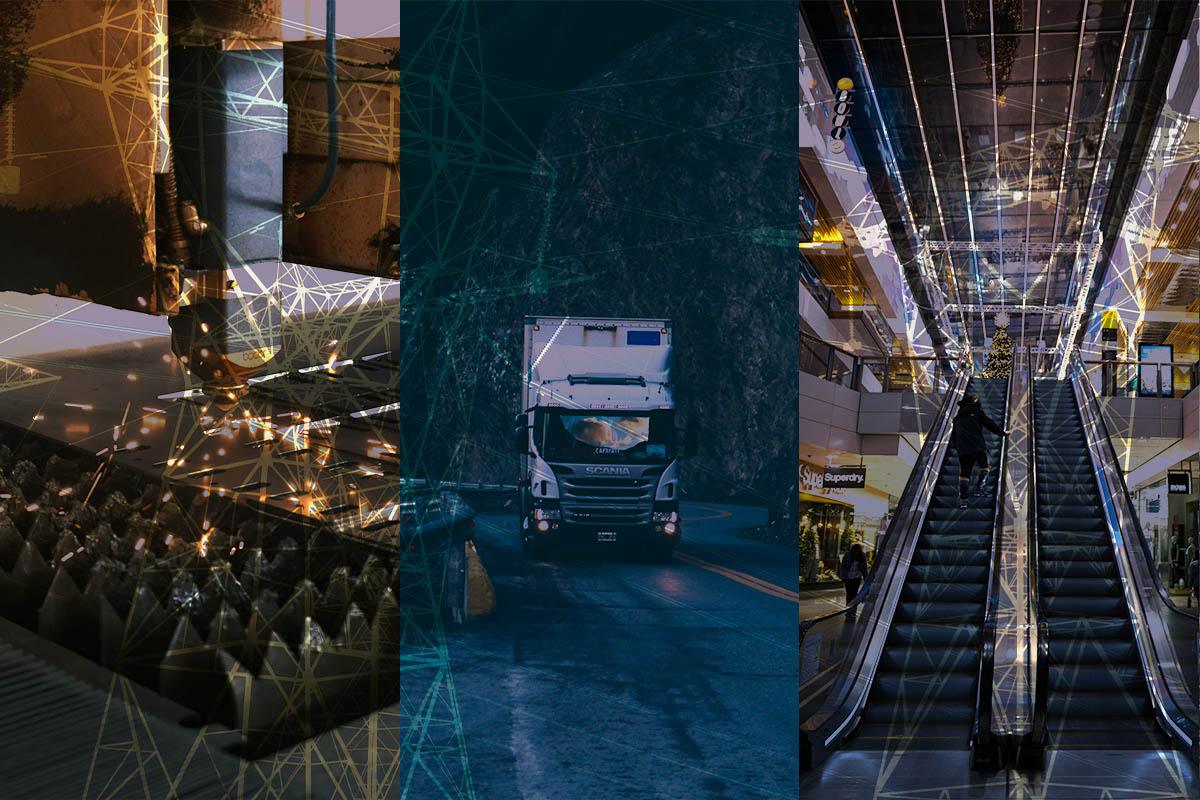
Thought
Sector Breakdown: Manufacturing, Logistics, and Retail Face Challenges in UK’s Grid Electrification
Series: The UK’s Grid Electrification | Part 3/3
Not all sectors face the same grid challenges. For some, electrification is a relatively simple shift. For others, it’s a potential business risk that could drive up costs, impact operations, or force major capital investment. Real asset investors need to understand where the pressure points are, because tenants will be looking to them for solutions – or looking elsewhere.
Manufacturing: The Hardest to Decarbonise
Manufacturing is where the energy transition gets messy. Heavy industry still runs on gas – not out of reluctance to decarbonise, but because high-intensity heat is difficult to electrify. While there’s buzz around hydrogen as a long-term fix, the infrastructure isn’t there yet, and the costs don’t stack up at scale.
“For manufacturers, switching from gas to electricity could mean a fundamental shift in how they operate. The technology exists, but it’s expensive, untested at scale, and in some cases, requires completely rethinking production methods. You’re not just swapping out a boiler; you’re redesigning the whole process. That’s a massive investment, and not every business is able to make it. Because of this, location becomes a key factor in their ability to transition, and a manufacturer might be forced to look for a building with the grid capacity to support their energy demands. If the power isn’t there, they’ll go elsewhere.”, Matt Browne Associate Director at EVORA, explains.
For investors, the risk is twofold. First, tenants facing skyrocketing electricity prices may struggle to absorb the costs. Second, as investors push toward Net Zero, they may have to justify why emissions at their assets remain stubbornly high – especially if those emissions sit in Scope 3. Retrofitting manufacturing sites for Net Zero isn’t as simple as adding solar panels; in many cases, it requires a total overhaul of processes. That means landlords need to engage early, understand tenant constraints, and explore solutions like on-site generation, energy storage, or flexible leasing structures to manage the transition.
Logistics: The EV Infrastructure Gap
EV trucks are coming – fast. Amazon, DHL, and other logistics players are rolling them out across their fleets. But the infrastructure to support them is lagging behind.
Most logistics parks weren’t designed with high-capacity charging in mind, and adding that infrastructure isn’t just about installing a few chargers – it requires serious upgrades in power supply. Investors with industrial assets should be planning now: Does my site have the grid capacity to handle tenant demand? If not, what’s the backup plan? Because if these tenants can’t electrify their fleets easily, they will look for locations where they can.
On-site generation could be part of the answer. Battery storage and solar integration can help smooth demand spikes, reduce reliance on an overburdened grid, and potentially offer landlords an additional revenue stream.
Both industrial and logistics have proved popular with investors since COVID, but to retain that asset value in the future, grid constraints need to be considered and prepared for. Logistics sites without a plan for electrification risk becoming obsolete sooner than many investors expect.
Retail: Energy as a Competitive Edge
Retail is often sitting on a goldmine of underutilised space. Rooftops, parking lots, and even empty land could be turned into revenue-generating energy hubs.
Solar carports, for example, aren’t just environmentally savvy; they offer real financial benefits. Shopping centres with integrated charging infrastructure will attract more EV-driving customers. Retailers with their own energy supply can buffer themselves against rising costs. And landlords who can offer power as part of a lease package might find it gives them an edge in an increasingly competitive market.
But there’s also a hidden risk: older retail sites reliant on gas heating could face a painful transition as fossil fuel costs rise. Investors should be evaluating whether their assets are ready for full electrification, or whether retrofitting them will become an unplanned expense down the line.
The Grid Is Changing – Are Your Assets Ready?
Grid constraints, rising energy costs, and shifting tenant expectations are already starting to make waves for UK’s real asset investors. As we’ve explored in this series of articles, the UK’s electrification push is reshaping real estate, from national grid capacity challenges to hyper-local bottlenecks. The impact varies by sector, but the message is the same: investors who don’t plan for these changes risk higher costs, stranded assets, and tenants looking elsewhere.
The smartest investors aren’t just reacting, they’re taking control. That means securing grid capacity early, integrating renewables and storage into asset strategies, and rethinking lease structures to future-proof portfolios. EVORA’s Net Zero team is already helping real asset investors navigate this landscape, from identifying grid risks to building resilient, high-value portfolios. Reach out to us to learn how we can help you adapt to the new energy landscape. Because the grid is evolving, and if your energy strategy isn’t evolving with it, you’re already behind.













